One of the best cookbooks I own is a faded op-shop find, published by an under-funded kindergarten forty years ago.
The foreword of The Ponsonby Personality Cookbook & Restaurant Guide politely complains it “has to find a large percentage of the money to pay for normal running expenses” and how (typical of most buildings in the area) theirs needs restoring. In one of Auckland’s poorest urban areas at the time, Ponsonby Kindergarten had to pay for it’s own building maintenance and was on the 1979 hustle. They asked local chefs, community icons and struggling creatives to submit recipes or run modest advertisements in their local booklet. The result is an organic, hilarious and soulful snapshot of what this inner-city Auckland hood was like…. decades before it’s grotesque gentrification.
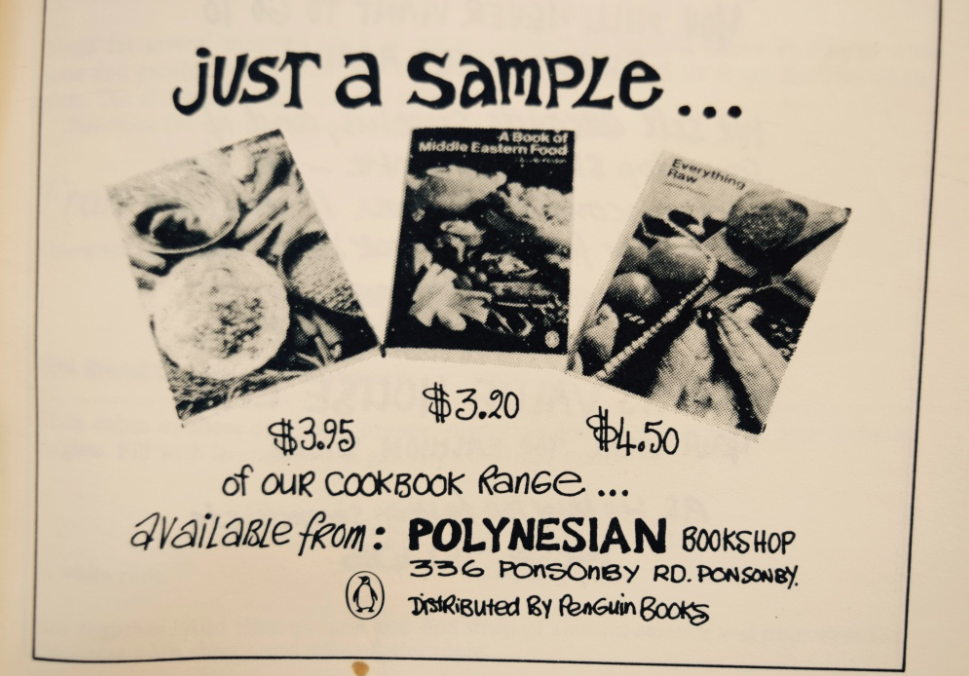
That’s not to say there aren’t attempts to be ‘worldly’ or pretentious in there. After all this is Nu Zilind in the late 70’s/80’s and the cookery is very of it’s time. An iced cucumber soup that requires green food dye, a LOT of ‘racy’ French cuisine and an abundance of veal, liver and rabbit representation. It also reads like an unknowing flex, at times a who’s who of future icons who just so happened to be locals supporting a struggling kindy.
‘New Zealand’s most important painter’ Colin McCahon opens the book’s Vegetable section, ex All-Black Andy Haden stuffs a steak and groundbreaking chef couple ‘Hudson & Halls’ offer kitsch recipes (and even run an ad for their local Oyster & Fish restaurant). There are recipes that reflect the multicultural area at the time: Empanadas, Yugoslav donuts and countless curries – some spicier than others. Even a local KFC manager Kumar Kumaran shares a beloved dessert (Strawberry Flambé, of course).
For me it’s the prevalence of the Māori and Pasifika recipes that makes the Ponsonby Personality Cookbook a timeless taonga — not to mention a political one.
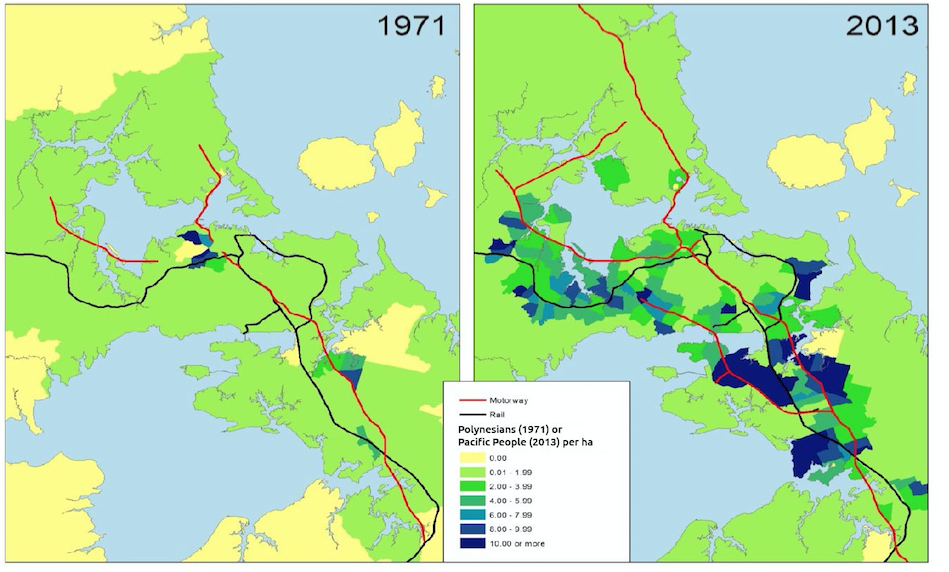
On the above map, dark blue represents the highest measure – 10 Pasifika people per urban hectare (according to the census of that respective year). In 1971 on the left, you will see two dark blue zones with high Pacific/Māori populations. We see a few burgeoning southside suburbs in Manukau, then at the top just shy of the CBD we see a high density Pacific population in Newton/Grey Lynn/Ponsonby.
In 2013, we see a changed city with dark blue spread across the map (a reflection of Auckland’s claim to being the ‘biggest Polynesian city in the world’). Today the map shows concentrated Pasifika numbers mostly in South Auckland and in the Western suburbs. But what happens if you keep your eye on the same area and compare what Ponsonby looked like the decade this cookbook was written, and what it looks like now? While I personally know a few P.I families are still there holding it down for the rest of us, this map contrasts a grim truth — and not a dark blue pixel in sight.
It’s for this reason I want to specifically share and showcase eight of the special Māori and Pasifika recipes from the book. This is to make our cultural kai more accessible to those who want to learn but also to shine a light on some of the unassuming heroes from the area who shared these treats. Unlike some of the book’s more self-conscious offerings most of these recipes still hold up today. I also love how these plates come from all over the South Pacific. They reflect the eating of the time, accessible staples simplified to stretch and satisfy brown families on a tight budget.
It’s important to me, as someone who’s paternal families arrived in Ponsonby from Rarotonga and Samoa (but are no longer there) that people don’t forget about this history. The Polynesian legacy of Auckland’s inner-city (which includes the Polynesian Panthers just to name a few) is always threatened with erasure and selective memory of the disarmingly different residents of today. A way to honour the history (for those like myself who feel culturally dejected and misplaced whenever I lament the Ponsonby of old) is to take one of these recipes and make them for your fam. Feel free to modernise or elaborate, while heart-warming this is not necessarily tapu stuff lol. It’s a fairly strange rebellion but these days are more kitchen-bound than most. Plus much like charity, food sovereignty begins at home.

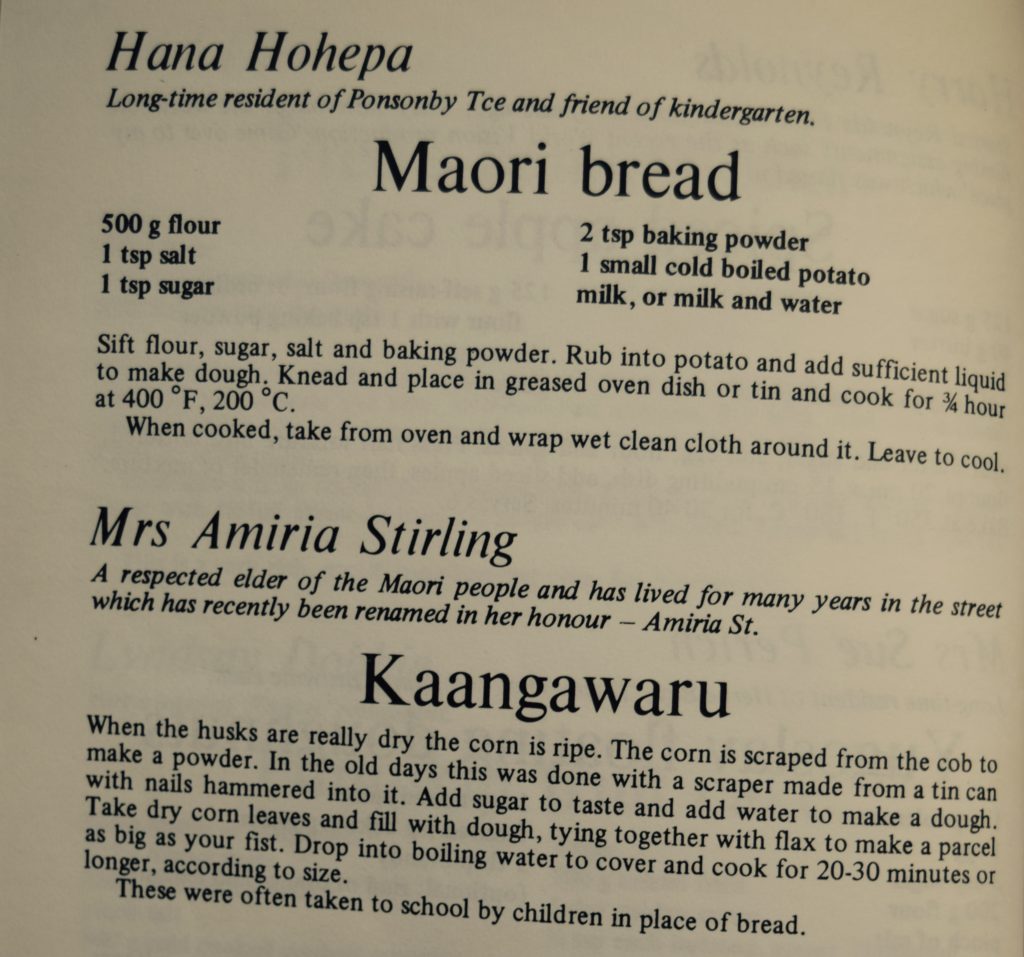

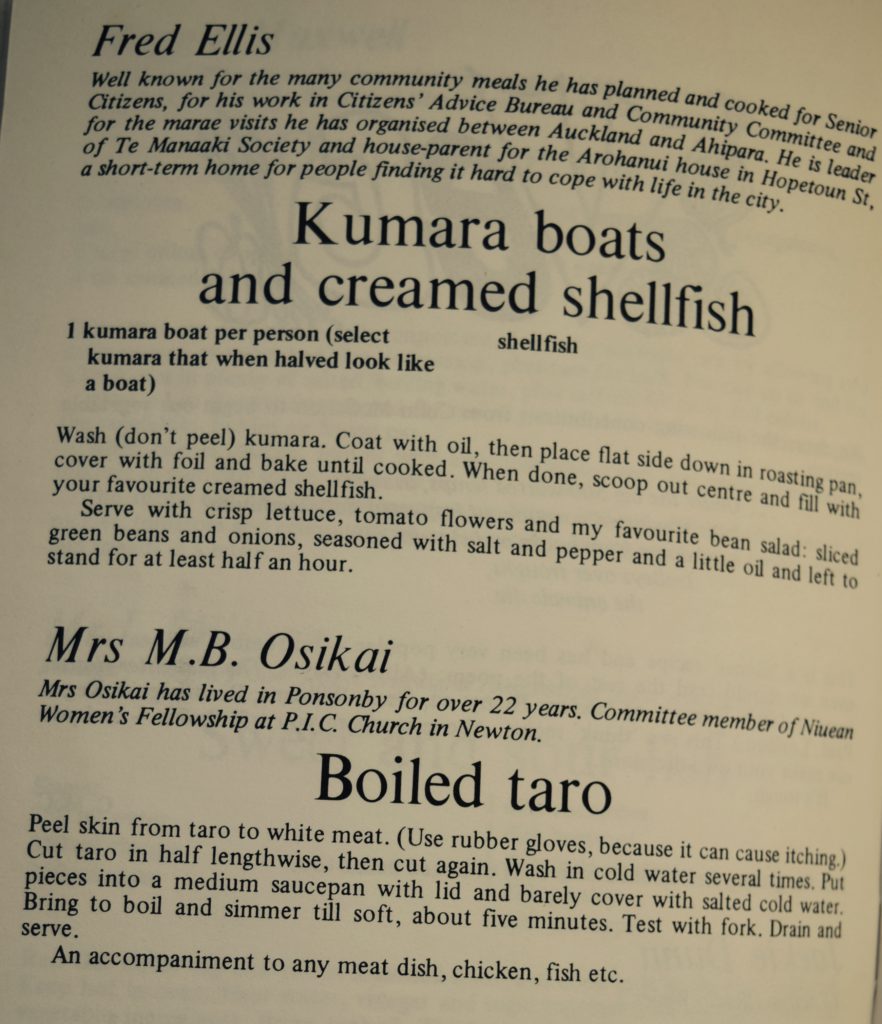

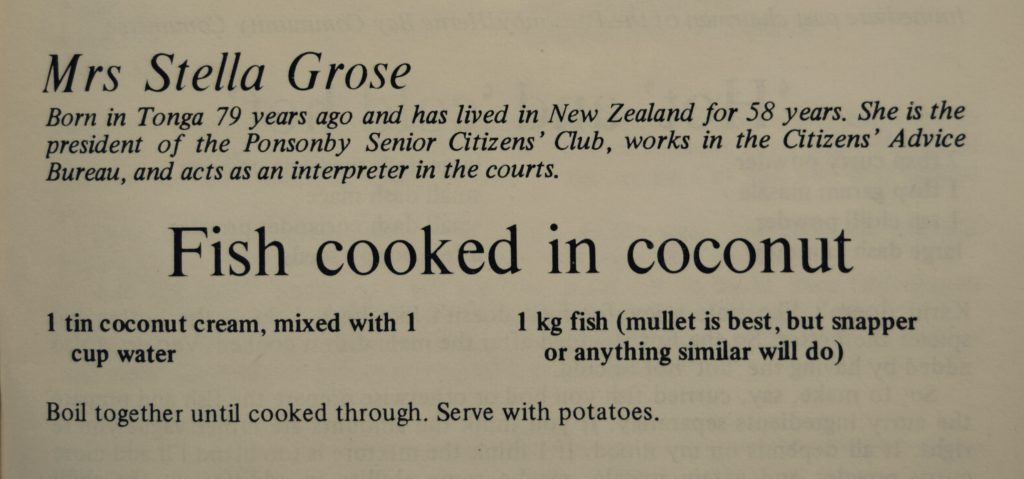
There are far too many crack-up and genuinely delicious moments in this book and I implore anyone in a position to republish this, to not sleep. That might prove hard as I could only find one other copy in the National Library, so it looks like I got a bonafide relic on my hands – which is why I’m sharing the shit out of it lol. I think the book finding me was it’s destiny in a way.
Shout out the Ponsonby Kindergarten for making such a cool book!
